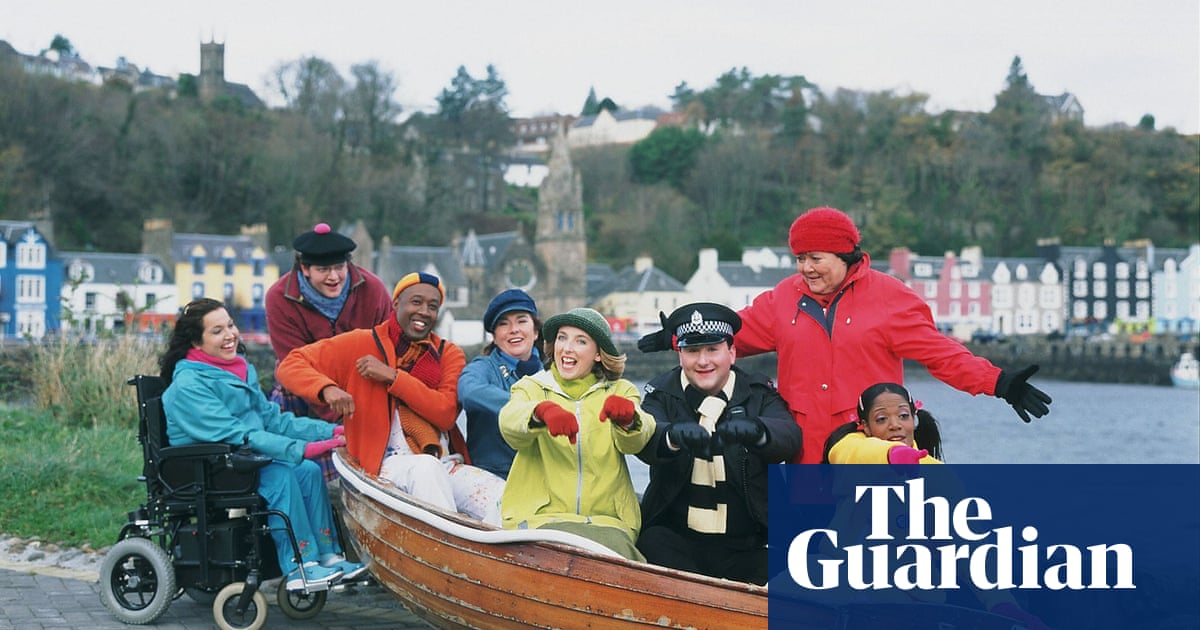After graduating from Rada I’d been a jobbing actor for 20 years. One day I was with my kids watchingPlay School, and thought: “I could be a presenter on this.” So I became one, and then the BBC trained me up as a preschool director and I went on to be a freelance director and producer specialising in preschool.
The BBC wanted to do a preschool drama centred around travellers in Ireland. It didn’t get commissioned but it gave me the idea to create something set in a community. I had a health hiccup, which put me out of work but gave me downtime to think. Play School had been a new programme every day, so it had an immediacy. I thought: “Why not make a preschool soap?”
A year later, BBC had createdCBeebiesand had masses of airtime to fill and were looking for a programme that was about the world around us, so I pitched my idea. The commissioning editor said: “How can you do a soap for preschool kids?” I said: “Well, instead of the Queen Vic you could have a nursery school.” He said: “That’s quite a good idea.” I was made series producer and we had to film 126 episodes in 10 months, beginning in January 2002.
I went down to the EastEnders set. They were very helpful and I came back with a formula. We were originally going to film in Kirkcudbright but that was too far from Glasgow, where we needed to film some of the indoor shots, so we moved it to Tobermory on the Isle of Mull, which is a child’s dream with all its colours, water and hills. I’d already written the theme song: What’s the Story in Tobermory? But there was a Womble calledTobermory, so a researcher in the Gaelic department came up with Balamory. It wasn’t a nod to Oasis’s (What’s the Story?) Morning Glory, which I’d never heard of!
We put out feelers for the cast, such as “a child’s dream nursery teacher” for Miss Hoolie. Lionel Jefferies, who’d played the grandfather in Chitty Chitty Bang Bang, applied, but we weren’t really looking for named actors, plus – it’s terrible to say – I think I was too terrified to audition him in case I had to say no. Mary Riggans, who’d been in Scottish soap opera Take the High Road, wowed us, and we cast her as Suzie Sweet. We constructed our own school in Barmulloch, in the north of Glasgow. The kids would come in and believe it was their nursery, so they didn’t have to act.
Kids programmes aren’t just for children. They’re meant to be a shared experience. The characters we created all had their quirks. There was friction between [school bus driver] Edie McCredie and Suzie Sweet [who runs the village shop and cafe]. Miss Hoolie [nursery teacher] and PC Plum quite liked each other. I think the quirks made them seem more relatable. We created a community on this little island that felt realistic and had humour no matter what age you are. I think that’s probably why people are so fond of the characters and the place.
I’m not involved in thereboot, at least, not yet.
I was diagnosed with spinal muscular atrophy at the age of two. It was amazing how many people thought my wheelchair was a prop. A small role in ITV drama Blind Ambition that centred on disabled athletes gave me the itch to act, although being disabled often means playing a character who specifically has a disability issue or medical problem. Eventually I found myself in a room with Brian Jameson and lots of other actors who were all being considered for the role of Penny. My disability was never openly discussed in front of me, which is what made the role so very important to me.
Penny runs the village shop and cafe with Suzie Sweet. She’s a bit of a maths wizard and likes organising. As the writers got to know me and realise how active I was, Penny went on to be the football and rowing coach. I spent the best part of three years filming up inScotland, doing 14-hour days but having the best of times.
Working on Balamory was such joy. I was surrounded by such a brilliant cast and crew. We laughed a lot! The scripts were funny but also sometimes surreal, like one about a party at the nursery when Penny and Suzie were dressed as Pearly Queens but nobody else was in costume. It was also emotional – I particularly remember the episode when Penny and Suzie went to Finland to visit Santa. I got to meet him and cuddle a litter of husky puppies – there were sobs!
The Balamory fandom quickly grew. We were able to meet many of them when we performed live on the arena tours. It all felt a bit rock’n’roll. I remember Sophie Ellis-Bextor coming to the show and saying she loved Penny’srap song. For the first time my son started to think I was cool. I started to realise how popular the show had become when I went to St James’ Park to watch Newcastle United play and the fans, in their thousands, all sang What’s the Story? when they saw me. It gave me goosebumps, and still does, thinking about it.
